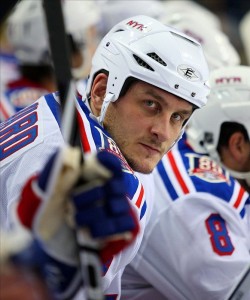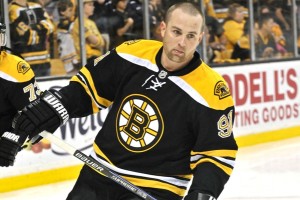The sporting world was abuzz late last week, as news broke of a settlement involving the National Football League and 4,500 former NFL players. The settlement stems from a lawsuit filed in U.S. District Court regarding head injuries suffered by these players during their NFL careers. Under the terms of the settlement, the NFL doesn’t acknowledge liability for the head injuries or any resultant medical complications suffered by its players, but the league will pay a $765 million settlement – including $675 million to compensate former players (or their families) for any “cognitive injuries” they may have suffered during their careers.

While the physical toll that football puts on its players has been a subject of much discussion for quite a while, it’s only been recently that a similar discussion has emerged regarding hockey. The 2003 in-game attack on Steve Moore by Todd Bertuzzi – and resultant legal wranglings – began some intensive discussions about fighting and physicality in hockey, a discussion that has only intensified following the tragic summer of 2011 which saw the deaths of hockey pugilists Derek Boogaard, Wade Belak and Rick Rypien, as well as the premature end of the careers of prominent NHLers like Marc Savard due to concussion-related injuries.
Sports business law professor Marc Edelman, of Zicklin School of Business and Fordham Law School, explained that the specific structuring of the agreement between the NFL and the players likely minimizes its potential impact on future cases.
“It’s very typical in the private settlement of any dispute that there will be a clause where there is an agreement that no liability is acknowledged,” said Edelman. “This is probably the most important thing for a defendant to ever get when they settle a case for two reasons: one, it prevents the settlement from being used in future litigation as a way of showing past wrong-doing and second, from a public relations point-of-view, it makes the party that settles look better.”
In other words, from a strictly legal standpoint, the NFL’s settlement may not be a precedent-setter because the league has not formally admitted wrong-doing or culpability for the injuries in question. Therefore, the settlement will probably not even stand as a precedent for other cases involving the NFL and head injuries, let alone cases involving the National Hockey League. The real impact may be on the public relations front.
The Ontario and Western major-junior hockey leagues in Canada have restricted fighting, while the NHL has become increasingly stringent on hits targeting the head (under Rule 48) and fights in the late stages of games. While Dr. Robert Cantu of the Sports Legacy Institute suggested (when we chatted with him in late 2012) that the NHL would gradually eliminate fighting, following the lead of the grassroots levels of hockey, Edelman is more skeptical.
“If the NHL as a league truly wished to stamp out fighting, they’d put colossal penalties on the team owners in which the players engaged in fighting,” noted Edelman. “If the owners of the National Hockey League collectively agreed that each time players threw a punch, the owner of that team would be subject to a two million dollar fine, I assure you the team owners would pass the message to the coaches very quickly, and then onto the players, ‘do not even think about throwing a punch.'”

Contrary to the suggestion that the NHL will enact gradual changes leading to an elimination of fighting, Edelman feels that nothing will fundamentally change until something drastic happens to force a change.
“I think the end of fighting in the NHL will not come until the next instance in which a fight leads to a grave result. It will take at least one more situation similar to the Steve Moore case, and perhaps even a case where a fight leads to someone losing consciousness for a substantial period of time or dying before we see a change,” said Edelman.
In terms of what the immediate impact of the NFL’s settlement, Edelman explained that he doesn’t anticipate any real resultant changes in the NHL – either due to legal or public relations pressures.
“I don’t think we’ll see a substantial change,” said Edelman. “Keep in mind the NFL has become a 10 billion dollar business because among other things, fans enjoy watching the hard hits. Fans are not as interested in watching flag football. It’d be a dramatic change to their business model. The same can be said at least for the segment of fans in the NHL. While I can’t quantify the amount, it seems a safe bet that hockey game attendance would decrease, at least marginally, if there was no fighting involved. It is going to take a cost-benefit analysis of the risks of legal challenges and lawsuits against them that stem from injuries against the potential loss in revenue that would stem from a loss of fan interest by removing the more dangerous aspects of the game.”
In the meantime, hockey’s battles continue – both on and off the ice. While training camps are about to begin to kick off the 2013-14 NHL campaign, the family of Derek Boogaard filed a wrongful death suit against the NHL back in April – the result of which may have some bearing on how long fighting remains in the game and to what degree.